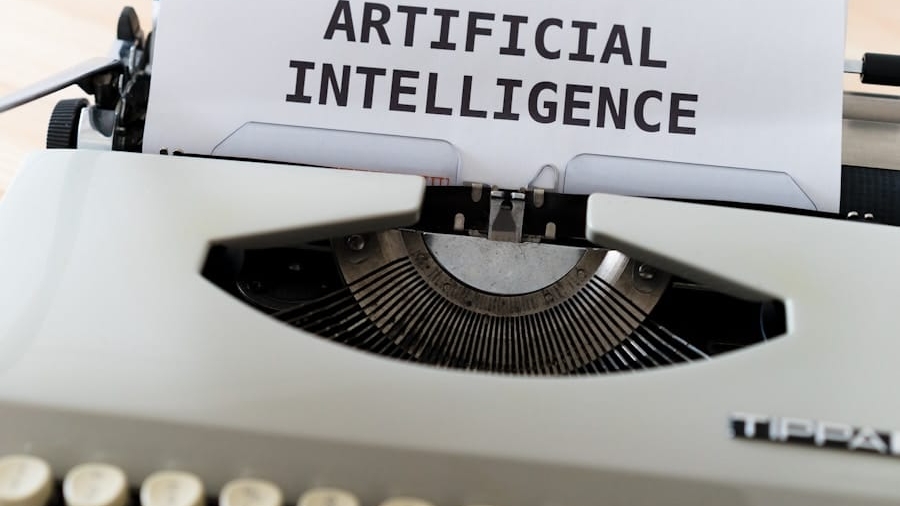Artificial Intelligence (AI) has emerged as a transformative force across various sectors, and its application in criminal behavior analysis and prevention is particularly noteworthy. The integration of AI technologies into law enforcement and criminal justice systems has the potential to revolutionize how authorities understand, predict, and respond to criminal activities. By leveraging vast amounts of data, AI can identify patterns and trends that may not be immediately apparent to human analysts, thereby enhancing the effectiveness of crime prevention strategies.
This intersection of technology and law enforcement raises critical questions about the future of public safety, the ethical implications of surveillance, and the balance between innovation and civil liberties. The use of AI in criminal behavior analysis is not merely a futuristic concept; it is already being implemented in various forms. From predictive policing algorithms that forecast potential crime hotspots to sophisticated data analytics that assist in criminal investigations, AI is reshaping the landscape of law enforcement.
As society grapples with rising crime rates in certain areas and the need for more efficient policing methods, the role of AI becomes increasingly significant. However, this technological advancement also necessitates a thorough examination of its implications for justice, equity, and accountability within the criminal justice system.
Key Takeaways
- AI is revolutionizing criminal behavior analysis and prevention by providing advanced tools for data analysis and prediction.
- Current applications of AI in criminal behavior analysis include facial recognition, predictive analytics, and natural language processing.
- Advancements in AI technology for criminal behavior analysis include the use of machine learning algorithms and deep learning models for more accurate predictions.
- Ethical considerations in the use of AI for criminal behavior analysis include concerns about privacy, bias, and the potential for misuse of data.
- Challenges and limitations in the use of AI for criminal behavior analysis include the need for large, high-quality datasets and the potential for algorithmic bias.
- AI plays a crucial role in predictive policing and crime prevention by identifying patterns and trends in criminal behavior to allocate resources more effectively.
- Future implications of AI in criminal behavior analysis and prevention include the potential for more targeted interventions and the need for ongoing ethical and legal considerations.
- The potential impact of AI on the criminal justice system is significant, with the potential to improve efficiency and accuracy in identifying and preventing criminal behavior.
Current Applications of AI in Criminal Behavior Analysis
AI is currently employed in several key areas within criminal behavior analysis, each demonstrating its capacity to enhance law enforcement capabilities. One prominent application is in predictive policing, where algorithms analyze historical crime data to identify patterns and forecast where crimes are likely to occur. For instance, cities like Los Angeles and Chicago have implemented predictive policing software that utilizes machine learning techniques to assess various factors such as time, location, and type of crime.
By identifying potential hotspots, law enforcement agencies can allocate resources more effectively, potentially preventing crimes before they occur. Another significant application of AI is in the realm of facial recognition technology. Law enforcement agencies are increasingly using AI-driven facial recognition systems to identify suspects from surveillance footage or public spaces.
For example, the Metropolitan Police Service in London has deployed facial recognition technology during major events to identify individuals on watchlists. While this technology can enhance public safety by quickly identifying potential threats, it also raises concerns about privacy and the potential for misidentification, particularly among marginalized communities.
Advancements in AI Technology for Criminal Behavior Analysis

The field of AI is rapidly evolving, with advancements in natural language processing, and data analytics significantly enhancing its application in criminal behavior analysis. Machine learning algorithms have become more sophisticated, allowing for better pattern recognition and predictive capabilities. For instance, deep learning techniques enable systems to analyze vast datasets with greater accuracy, identifying subtle correlations that traditional statistical methods might overlook.
This advancement is particularly beneficial in analyzing social media data or online communications for signs of criminal intent or gang activity. Natural language processing (NLP) has also made strides in analyzing unstructured data sources such as police reports, witness statements, and social media posts. By employing NLP techniques, law enforcement agencies can extract relevant information from these texts more efficiently.
For example, AI systems can analyze thousands of police reports to identify common themes or emerging trends in criminal behavior, providing valuable insights that can inform proactive policing strategies. These advancements not only improve the efficiency of investigations but also enhance the overall understanding of criminal behavior dynamics.
Ethical Considerations in the Use of AI for Criminal Behavior Analysis
The deployment of AI in criminal behavior analysis raises significant ethical considerations that must be addressed to ensure responsible use. One primary concern is the potential for bias in AI algorithms. If the data used to train these systems reflects historical biases—such as over-policing in certain communities—there is a risk that the AI will perpetuate these biases in its predictions and recommendations.
For instance, if an algorithm is trained on data that disproportionately represents arrests from minority neighborhoods, it may unfairly target those communities for increased surveillance or policing. Moreover, the use of AI technologies often involves significant surveillance capabilities that can infringe on individual privacy rights. The implementation of facial recognition technology and other monitoring systems can lead to a society where individuals are constantly watched, raising questions about civil liberties and the right to anonymity.
The balance between ensuring public safety and protecting individual rights is a delicate one that requires careful consideration by policymakers and law enforcement agencies alike.
Challenges and Limitations in the Use of AI for Criminal Behavior Analysis
Despite its potential benefits, the use of AI in criminal behavior analysis is not without challenges and limitations. One significant challenge is the quality and availability of data. AI systems rely heavily on large datasets to function effectively; however, many law enforcement agencies may not have access to comprehensive or high-quality data.
Incomplete or inaccurate data can lead to flawed predictions and misguided policing strategies. Additionally, there are concerns about data privacy and security, particularly when sensitive information is involved.
Many advanced machine learning algorithms operate as “black boxes,” making it difficult for users to understand how decisions are made. This lack of transparency can hinder accountability and trust in law enforcement practices. If officers cannot explain why an algorithm flagged a particular individual or area as high-risk, it raises concerns about due process and fairness in policing decisions.
The Role of AI in Predictive Policing and Crime Prevention

Forecasting Crime
By analyzing historical crime data alongside various socio-economic factors, predictive policing algorithms can forecast where crimes are likely to occur in the future. This proactive approach allows law enforcement agencies to allocate resources more effectively and focus their efforts on areas identified as high-risk for criminal activity.
Real-World Applications
For example, the city of Memphis has utilized predictive policing software known as HunchLab, which combines crime data with demographic information to generate risk scores for different neighborhoods. Officers can then prioritize patrols based on these scores, potentially deterring crime before it happens.
Concerns and Criticisms
However, while predictive policing has shown promise in reducing crime rates in some areas, it also raises concerns about reinforcing existing biases within the criminal justice system. Critics argue that relying on historical data may perpetuate cycles of over-policing in marginalized communities.
Future Implications of AI in Criminal Behavior Analysis and Prevention
As AI technology continues to advance, its implications for criminal behavior analysis and prevention will likely expand significantly. Future developments may include more sophisticated algorithms capable of integrating real-time data from various sources such as social media feeds, IoT devices, and community reports. This could lead to even more accurate predictions regarding criminal activity and allow law enforcement agencies to respond more swiftly to emerging threats.
Moreover, advancements in explainable AI could address some of the transparency issues currently associated with machine learning models. By developing algorithms that provide clear rationales for their predictions or recommendations, law enforcement agencies could enhance accountability and build public trust in their use of technology. Additionally, as public awareness grows regarding the ethical implications of AI in policing, there may be increased demand for regulations that govern its use—ensuring that civil liberties are protected while still leveraging technology for public safety.
The Potential Impact of AI on the Criminal Justice System
The integration of AI into criminal behavior analysis and prevention holds immense potential for transforming the criminal justice system. By harnessing advanced technologies to analyze data more effectively and predict criminal activity with greater accuracy, law enforcement agencies can enhance their operational efficiency and improve public safety outcomes. However, this transformation must be approached with caution; ethical considerations surrounding bias, privacy rights, and accountability must be at the forefront of discussions regarding AI implementation.
As society continues to navigate the complexities introduced by AI technologies within law enforcement, it is crucial to strike a balance between innovation and ethical responsibility. Policymakers must engage with stakeholders—including community members, civil rights organizations, and law enforcement professionals—to develop frameworks that ensure responsible use while maximizing the benefits that AI can offer in combating crime effectively. The future landscape of criminal justice will undoubtedly be shaped by these technologies; thus, proactive measures must be taken to ensure they serve as tools for justice rather than instruments of oppression.
In a related article discussing the top trends on Instagram for 2023, experts explore the impact of social media on criminal behavior analysis and prevention. The article highlights how AI technology can be utilized to monitor and track suspicious activities on social media platforms, aiding law enforcement agencies in their efforts to prevent crimes before they occur. To learn more about the latest trends in social media and their implications for criminal behavior analysis, check out the article here.
FAQs
What is AI in criminal behavior analysis and prevention?
AI in criminal behavior analysis and prevention refers to the use of artificial intelligence technologies to analyze and predict criminal behavior, as well as to prevent and mitigate criminal activities. This involves the use of machine learning algorithms, data analysis, and predictive modeling to identify patterns and trends in criminal behavior.
How is AI used in criminal behavior analysis and prevention?
AI is used in criminal behavior analysis and prevention through various methods such as predictive policing, risk assessment, and crime pattern recognition. Machine learning algorithms are used to analyze large volumes of data to identify potential criminal activities and predict future criminal behavior. AI is also used to develop tools for law enforcement agencies to better allocate resources and prevent crime.
What are the benefits of using AI in criminal behavior analysis and prevention?
The benefits of using AI in criminal behavior analysis and prevention include improved accuracy in predicting criminal behavior, more efficient allocation of law enforcement resources, and the ability to identify patterns and trends that may not be apparent to human analysts. AI can also help in identifying potential hotspots for criminal activities and developing targeted prevention strategies.
What are the challenges of using AI in criminal behavior analysis and prevention?
Challenges of using AI in criminal behavior analysis and prevention include concerns about privacy and data security, potential biases in the algorithms used, and the need for ongoing training and updates to ensure the accuracy and effectiveness of AI systems. There are also ethical considerations regarding the use of AI in law enforcement and criminal justice.
What is the future of AI in criminal behavior analysis and prevention?
The future of AI in criminal behavior analysis and prevention is likely to involve advancements in machine learning algorithms, increased integration of AI technologies into law enforcement systems, and the development of more sophisticated predictive modeling tools. There is also potential for AI to be used in rehabilitation and reintegration programs for offenders.

